Detailed analysis of the Canon PowerShot A95 images, from Imatest(tm)
I've recently begun using Norman Koren's excellent "Imatest" analysis program for quantitative, thoroughly objective analysis of digicam test images. I highly commend it to our technically-oriented readers, as it's far and away the best, most comprehensive analysis program I've found to date. (And with an introductory price of only $59, it's hard to beat.)
My comments below are just brief observations of what I see in the Imatest results. A full discussion of all the data Imatest produces is really beyond the scope of this review: Visit the Imatest web site for a full discussion of what the program measures, how it performs its computations, and how to interpret its output.
Here's some of the results produced by Imatest for the Canon PowerShot A95:
Color Accuracy
For the most part, the Canon PowerShot A95 has pretty good hue accuracy, but like many consumer-level digicams, tends to oversaturate its colors somewhat. The oversaturation is shown by the extent to which the circles (camera color) are displaced outward (higher saturation) relative to the ideal values (squares). On average, color saturation of swatches on the MacBeth ColorChecker(tm) chart are 117.3% of their ideal values. (An average oversaturation of 17.3%.)
The modest oversaturation is pretty typical of consumer digicams, and not
a cause for concern. Possibly more problematic is the hue shift seen in cyan
colors, (the points numbered 6 and 18 in the chart above), which tends to
move shades of cyan more toward blue tones. This is a common characteristic
of Canon consumer cameras, and thus far I haven't seen much apparent effect
from this in shooting with Canon cameras. I suspect the main effect would
be to produce richer blues in sky colors, something most consumers would probably
like.
Color Analysis
These images show the color behavior of the PowerShot A95 directly. In each color swatch, the outer perimeter shows the color as actually captured by the camera, the inner square shows the color after correcting for the luminance of the photographed chart (as determined by a 2nd-order curve fit to the values of the gray swatches), and the small rectangle inside the inner square shows what the color should actually be, based on perfect rendering to the sRGB color space.
Here, it seems that at least some of the oversaturation arises from the camera's
rather contrasty tone curve. It does show the effect of the hue shift in the
cyans and blues though, with the camera reproducing those colors as a little
"richer" or "cleaner" looking than in real life.
Gray Patch Tone and Noise Analysis
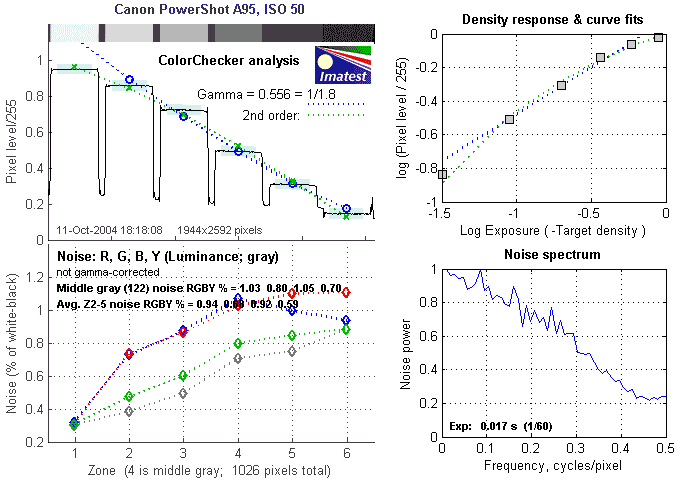
There's a lot in this particular graph, a lot more than I have room to go into
here. Bottom line, the PowerShot A95's noise levels are a little higher than
average across the board, but the noise spectrum is such that the noise is fairly
fine-grained.
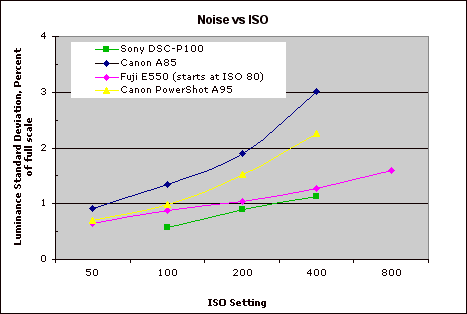
This chart compares the PowerShot A95's noise performance over a range of ISOs
against that of other cameras. As you can see, the A95 is somewhat noisier than
average across the board, particularly so at ISO 400, although its noise levels
are lower than those of the lower-resolution A85 at all ISOs. - The positive
side of this though, is that the camera tends to hold onto detail in subject
areas of subtle contrast better than many competing models do. (The Sony DSC-P100
being a case in point: It has very low noise figures numerically speaking, but
it trades away a tremendous amount of subject detail to achieve the low noise
specs. - Happily though, that behavior isn't at all shared by the higher-resolution
Sony DSC-P150...)
The chart above shows consolidated results from spatial frequency response
measurements in both the horizontal and vertical axes. The "MTF 50"
numbers tend to correlate best with visual perceptions of sharpness, so those
are what I focus on here. The uncorrected resolution figures are 1211 line widths
per picture height in the horizontal direction (corresponding to the vertically-oriented
edge), and 1025 along the vertical axis (corresponding to the horizontally-oriented
edge), for a combined average of 1118 LW/PH. Correcting to a "standardized"
sharpening with a one-pixel radius increases this number a fair bit, to an average
of 1365 LW/PH. These are fairly good numbers for a 5-megapixel camera.
For the real techno-geeks, the two plots below show the actual edge response
of the A95, for horizontal and vertical edges:
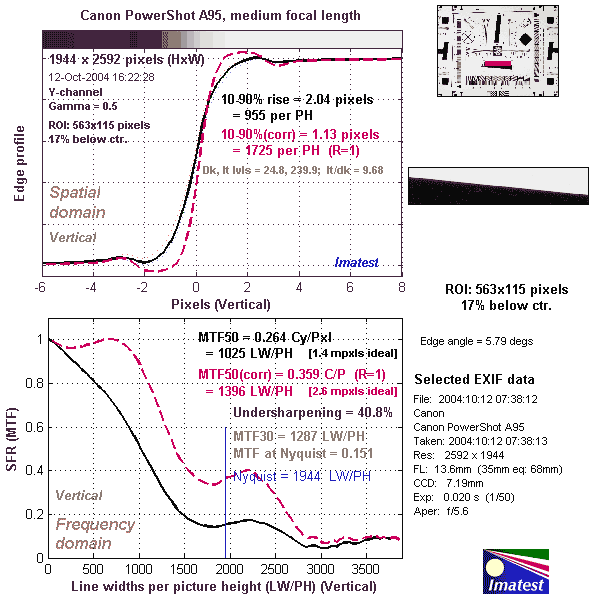
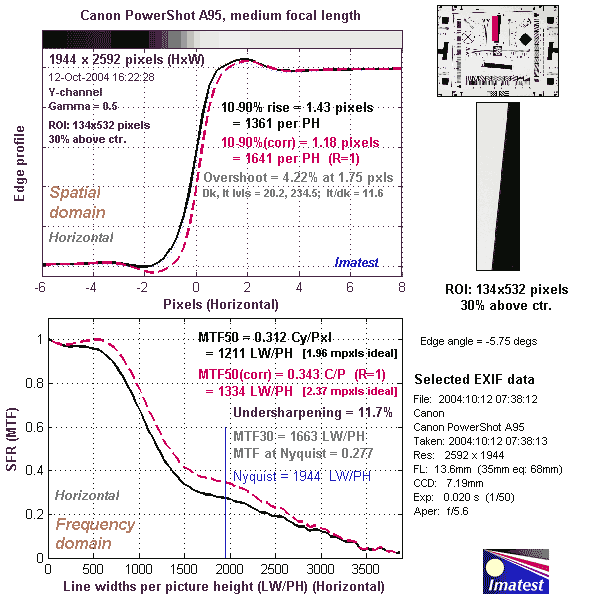
A95 Test Images
A95 Imatest Results
A95 Specifications
A95 "Picky Details"
Up to Imaging Resource digital cameras area
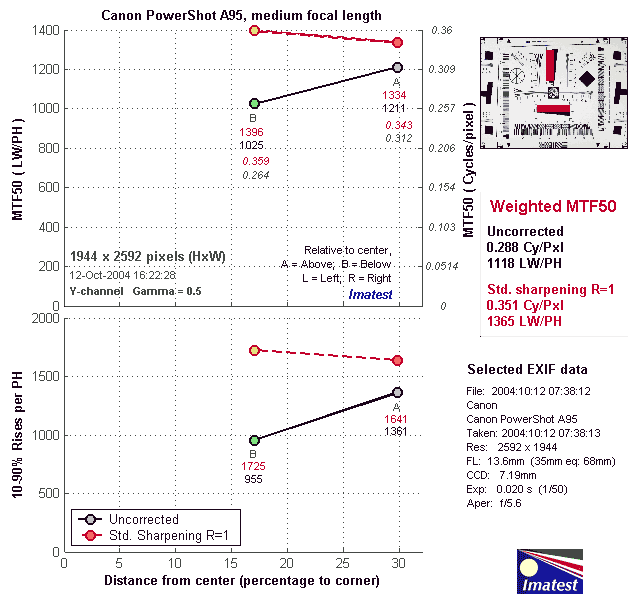

Follow Imaging Resource: